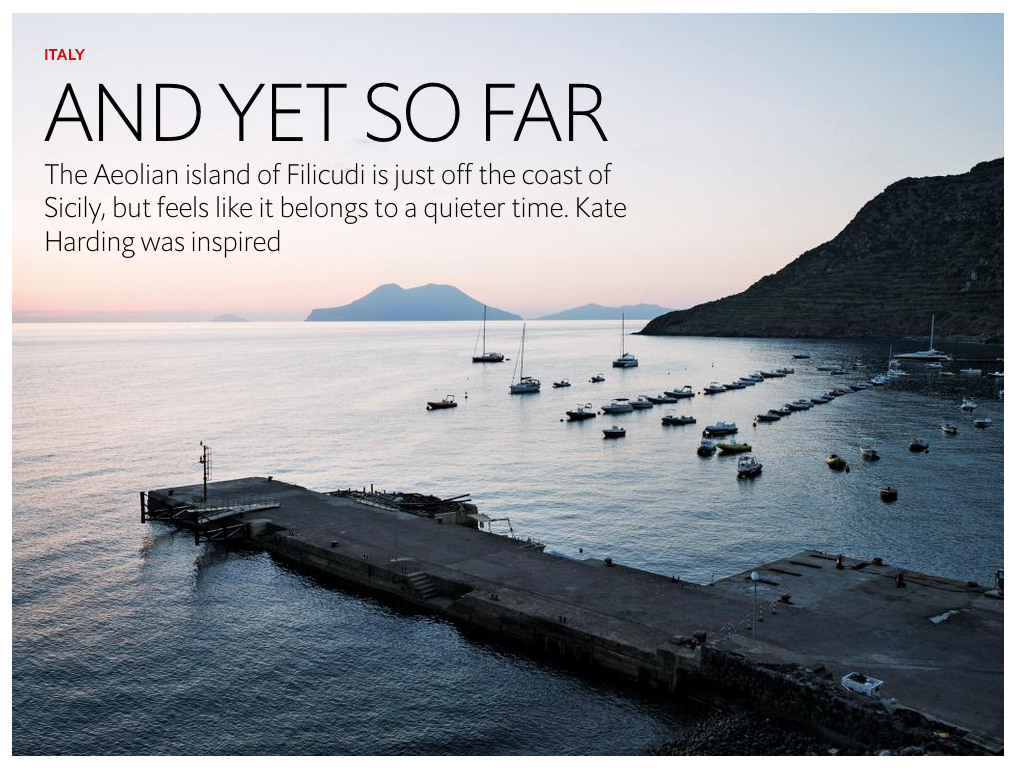Filicudi on 1683 Magazine

Six and a half years ago I decided that my burnt-out sister needed a break from life that was more of an antidote than a holiday. This was not such an easy thing to deliver. A former foreign correspondent, she craved remote, wild, sparsely inhabited terrain to offset her weariness with the modern world. Italy was not the obvious choice. In no small part thanks to E.M. Forster, the land of Leonardo and Michelangelo is perceived as a tame destination for a cultured traveller, a kind of extended gallery tour that can be done, Baedeker in one hand, Panama hat in the other. But we had a tip-off. An Afghan princess had built a house on an isolated tip of a far-flung island off Sicily. The house worked on solar panels and rainfall, took half an hour to reach on foot from the road, and looked out over the sea from high up an extinct volcano. This was a different kind of room with a view.
There is only one way to reach Filicudi: slowly. The Aeolian Islands form a spray on the map as if someone had been skimming stones off the northern coast of Sicily. Filicudi is the second farthest flung. The hydrofoils and ferries that connect it to the mainland stop at most of the other islands in the archipelago on the way: Vulcano, Lipari, Salina, Stromboli – the last a still-active volcano that shoots fire out visibly from its mouth every 20 minutes. By the time you reach Filicudi Port – which I have done half a dozen times since that first trip – the chances are that most of the other passengers will have disembarked at the more popular islands on the way. Only Alicudi, the last and smallest, a pimple on the map – with nothing but donkeys for transport – is less visited. (Text by Kate Harding)
Read the full article here: https://www.1843magazine.com/travel/and-yet-so-far



